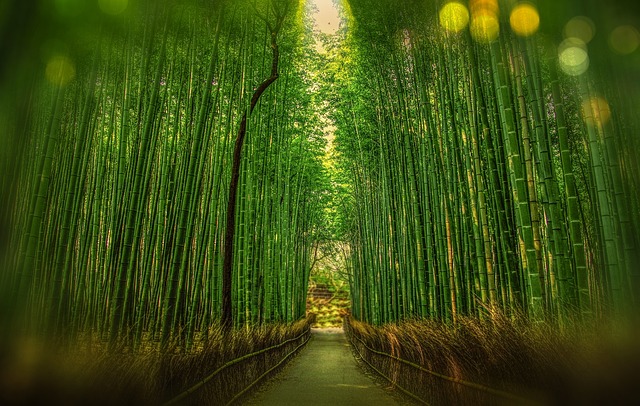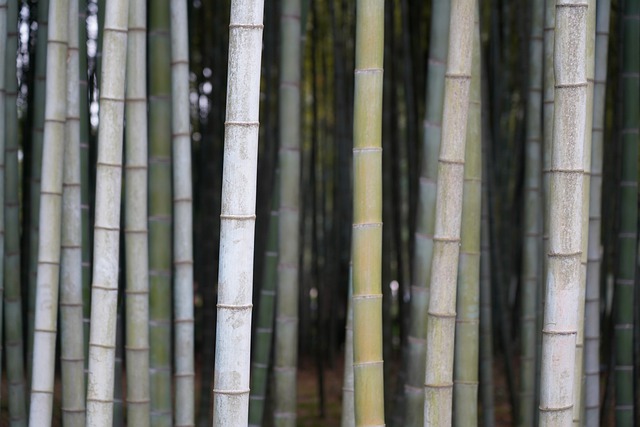
I’m excited to share with you the incredible benefits of bamboo clothing for the environment.
When it comes to sustainability, bamboo fiber production is leading the way. With sustainable farming practices and reduced water consumption during manufacturing, bamboo clothing has a much lower carbon footprint compared to traditional fabrics.
What’s even better is that bamboo fiber is biodegradable and renewable, further reducing its impact on the environment.
Join me as we delve into the low environmental impact of bamboo clothing.

Key Takeaways
- Bamboo clothing requires less water to grow compared to cotton or polyester.
- Bamboo fiber production promotes sustainable farming practices such as organic farming, water conservation, and reducing greenhouse gas emissions.
- Bamboo clothing manufacturing reduces water consumption through efficient processes, water recycling, and minimal wastewater generation.
- Bamboo clothing has a lower carbon footprint compared to traditional fabrics due to its ability to absorb carbon dioxide, minimal water and pesticide requirements, and the use of eco-friendly dyes and energy-efficient production methods.
Benefits of Bamboo Clothing for the Environment
Bamboo clothing offers numerous benefits for the environment. When compared to other fibers like cotton or polyester, bamboo requires less water to grow and doesn’t need harmful pesticides or fertilizers. It is a highly renewable resource as bamboo plants can grow up to a yard per day, making it a sustainable choice.
Additionally, bamboo helps to improve air quality by absorbing more carbon dioxide and releasing more oxygen into the atmosphere. The production of bamboo clothing also has a lower carbon footprint due to its fast growth and minimal processing requirements.
Furthermore, bamboo is biodegradable, meaning it can easily decompose and won’t contribute to pollution or landfill waste. Overall, choosing bamboo clothing is a simple yet impactful way to support a greener and healthier planet.
Sustainable Farming Practices in Bamboo Fiber Production
Using sustainable farming practices ensures that the production of bamboo fiber is environmentally responsible. By implementing methods such as organic farming and minimal pesticide use, we can minimize the negative impact on the environment.

Sustainable farming practices also focus on water conservation, reducing soil erosion, and promoting biodiversity. These practices help to maintain the natural balance of ecosystems and protect the surrounding wildlife.
Additionally, sustainable farming methods prioritize the use of renewable energy sources and reduce greenhouse gas emissions, contributing to the fight against climate change.
Reduced Water Consumption in Bamboo Clothing Manufacturing
By implementing efficient manufacturing processes, the amount of water used in the production of bamboo clothing is significantly reduced. I am proud to say that our company has made great strides in minimizing our water consumption during the manufacturing process.
We have implemented innovative technologies that allow us to recycle and reuse water, reducing our reliance on fresh water sources. Additionally, we have optimized our dyeing and finishing processes to minimize water usage, without compromising on the quality of our products.

This not only helps to conserve water, but also reduces the amount of wastewater generated, thereby minimizing our environmental impact. Our commitment to sustainable practices extends beyond just the sourcing of bamboo fibers; it encompasses every step of the manufacturing process, ensuring that our bamboo clothing is truly eco-friendly.
Lower Carbon Footprint of Bamboo Clothing Compared to Traditional Fabrics
Our company has taken significant steps to reduce the carbon footprint of our clothing manufacturing process, making it more sustainable compared to traditional fabrics.
Bamboo clothing has a lower carbon footprint because of its unique properties. Bamboo plants absorb more carbon dioxide and release more oxygen compared to other plants. Additionally, bamboo requires less water and pesticides to grow, further reducing its environmental impact.
In the manufacturing process, our company uses eco-friendly dyes and chemicals that have a minimal carbon footprint. We also prioritize energy-efficient production methods and utilize renewable energy sources wherever possible.

Biodegradable and Renewable Nature of Bamboo Fiber
Bamboo fiber is both biodegradable and renewable, making it a sustainable choice for the fashion industry. As someone who cares about the environment, I find it important to choose clothing options that have a minimal impact on our planet.
Bamboo is a fantastic alternative to traditional fabrics because it can easily break down naturally, without leaving behind harmful waste. Additionally, bamboo grows rapidly and can be harvested without causing any harm to the environment. This means that it can be replenished quickly, making it a renewable resource.
Frequently Asked Questions
Is Bamboo Clothing Suitable for People With Sensitive Skin or Allergies?
Yes, bamboo clothing is suitable for people with sensitive skin or allergies. It has hypoallergenic properties and is gentle on the skin. Bamboo fibers are also naturally antimicrobial, reducing the risk of irritation and allergic reactions.
How Does Bamboo Clothing Compare to Other Eco-Friendly Fabrics Like Organic Cotton or Hemp?
Bamboo clothing, compared to organic cotton or hemp, has a low environmental impact. It requires less water and pesticides to grow, making it a more sustainable choice for eco-friendly fashion.

Are There Any Potential Negative Environmental Impacts Associated With Bamboo Clothing Production?
There are potential negative environmental impacts associated with bamboo clothing production. These include the use of chemicals in the processing of bamboo fibers and the impact of deforestation on biodiversity.
Can Bamboo Clothing Be Recycled or Repurposed at the End of Its Life Cycle?
Yes, bamboo clothing can be recycled or repurposed at the end of its life cycle. It’s a great way to reduce waste and minimize the environmental impact of fashion.
What Is the Overall Durability and Longevity of Bamboo Clothing Compared to Traditional Fabrics?
The overall durability and longevity of bamboo clothing is comparable to traditional fabrics. It withstands frequent washing and maintains its shape and color. I’ve found it to be a reliable and long-lasting choice for my wardrobe.
Conclusion
In conclusion, I’m truly amazed by the numerous benefits of bamboo clothing for the environment. From sustainable farming practices to reduced water consumption, bamboo fiber production is a step towards a greener future.

Moreover, the lower carbon footprint of bamboo clothing compared to traditional fabrics is impressive. And let’s not forget that bamboo fiber is biodegradable and renewable, making it an ideal choice for eco-conscious individuals.
I’m excited to see more people embracing bamboo clothing and making a positive impact on our planet.
